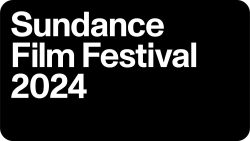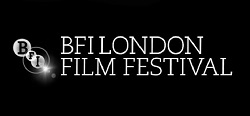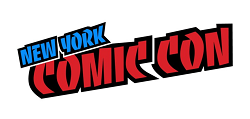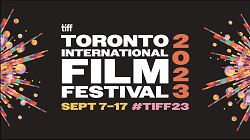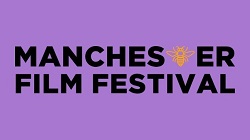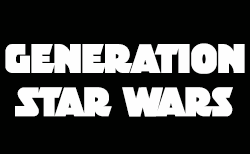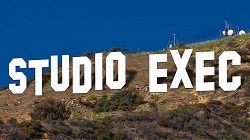After 40 years — it’s time to WAKE IN FRIGHT
I recently got the opportunity to see a new old film set in the brutal Australian Outback made by a polite Canadian who has waited forty years for the rest of the world to catch up to his bleak tale of a man’s fast downhill slide into the worst extremes of humanity and give it the recognition it deserved in 1971.

Donald Pleasence (as Doc Tydon) in Ted Kotcheff’s WAKE IN FRIGHT
(Photo Credit: DRAFTHOUSE FILMS)
The film is the excellent and hard to watch WAKE IN FRIGHT, directed by Ted Kotcheff (who went on to do FIRST BLOOD and UNCOMMON VALOR) .
This film follows without comment as John Grant; a bonded teacher (meaning he had to pay the Gov’t $1,000 and take any teaching assignment they gave him, no matter how terrible) goes on holiday via train to “The Yabba”. It’s a town that the words “sweaty” and “dusty” were invented to describe. It’s full of people (mostly men) in dead-end mining jobs who are casually brutal in ways that were shocking to the audiences in 1971 and still are today. It’s about watching a man go through his existential crisis and trying like hell to come out the other side, even when he’s lost all respect for self and even life. It also will make you thirsty just watching it and you don’t even know if Grant earns the ending he’s given and has to live with.
There. I hope that’s piqued your interest enough to look for this new release from Austin’s own DRAFTHOUSE FILMS

Started as an offshoot from Tim and Karrie League’s beloved (not too strong a term…ask anyone who’s been there) ALAMO DRAFTHOUSE theatre chain, and in order to get the kind of films that the Drafthouse audience likes… it turns out sometimes you have to buy them yourself and throw them out into the world.
The first DRAFTHOUSE FILMS movie was the excellent and criminally dark comedy, FOUR LIONS. They have followed up with a mixed bag of genre films like THE FP, the Academy award-nominated BULLHEADand the upcoming THE ABC’S OF DEATH.
WAKE IN FRIGHT was done at the dawn of the era in film of frank examinations of a person’s life (that turned out to be a forerunner of so much of what is now considered classic cinema and from auteurs who sometimes made it big in later decades because of the respect their earlier works had garnered) — that we often think most of those tough, gritty, take-no-prisoners types of films when you say “Made in the 1970’s”.
Hells bells…it’s what Instagram’s ENTIRE look is based on. Ted Kotcheff’s shooting style could have been a primer for those newly-rich bastards.
I was originally scheduled to meet with Ted in person while I was in Austin for FANTASTIC FEST, but instead I started off the phone call with Kotcheff explaining why I had missed an opportunity to talk to him as I had been feeling poorly that day and didn’t want to give others my cold, and the importance of avoiding Fantastic Flu and how poor Paul G. caught dysentery and missed half of it last year (he lives in Oregon Trail, in case you’re wondering).He agreed that perhaps I’d made the right choice, as he’d flown on to New York from there and didn’t want to get sick.
Holly: So, thanks for taking the time to talk with me…I’ll just start with a few questions and go from there.
Ted: Okay.
Holly: How do you think that your film (WAKE IN FRIGHT was titled THE OUTBACK in initial release) will be re-received after all these years later? Do you think it will be as critically received…that audiences might not come along with you to watch this desperate man on his downward spiral?
Ted: Well…first of all, the audiences so far… I just came back from Fantastic Fest in Austin and there were a lot of critics there…from Variety and elsewhere, and they all gave the film terrific reviews. The audience reaction was…they sold out both nights. And the audiences reacted very positively to it. I think it will. So far, the reviews in New York have been amazing. Amazingly good. But that doesn’t mean people will come see it. That’s unpredictable. But I do feel it has a better chance now. I do feel, Holly, the film was a bit ahead of its time. In its subject matter…this kind of dark, existentialist film. A guy on the downward decent into hell, more or less (chuckles) …but I think it was too strong at the time. I think film tastes were different then. I think that also there was some offense taken about the kangaroo massacre in the film.
Side note – pretty much the culmination of John Grant’s decent into madness and bestial behavior comes when a bunch of ‘real men’ from The Yabba (the sweaty, small town of Bundyabba he goes to on Christmas holiday) take him hunting for kangaroos. It is horrid, and difficult to watch, but in their effort to turn him into a MAN, he becomes worse than beast.

Gary Bond (as John Grant) in Ted Kotcheff’s WAKE IN FRIGHT
(Photo Credit: DRAFTHOUSE FILMS)
Holly: I did some reading on that sequence… it seems you got approval from the RSPCA to use the footage, and that it made quite a difference, all these years later?
Ted: to me, I gotta tell you, Holly… to me, killing an animal is horrible. I never understood the pleasure a man takes in killing an animal. I don’t understand it at all. Even back then. I would never dream in a million years of doing so for the sake of a film. That would be unspeakable. So, I didn’t really know how to do this.
(the film is adapted from the book of the same name – and it’s easy to describe on paper these things )
I had no idea how I was going to do that sequence…which is after all…the climactic scene or scenes in the part of the picture where he hits rock bottom.
Holly: It’s just depraved to watch those men do those things…
Ted: In the guise of making a guy into a man, they turn him into a beast. Anyway –but…one of the Australians said to me. “Don’t you know they kill hundreds of Kangaroos in the Outback every night?”
I said: “What?!? To what purpose?”
“Oh yeah…they send out six pairs of hunters and a refrigerated truck and they go off in all directions and they kill about a dozen each and bring ‘em back to the trucks and they skin them (to make all those cuddly toys for kids at Easter, like Koalas) and then they hand the carcasses in the truck and that’s it.”
“Why would they do that?”
“They send them to America for the pet-food industry.”
Holly: That’s pretty horrible.
Ted: I was appalled. They made good money doing that. I persuaded some of the professionals going out there every night and I shot it like a documentary film. Very neutral. So, though I didn’t specifically kill an animal for this film….I gotta tell you, I didn’t use 80% of what I shot.
Holly: It was just too much?
Ted: (making gagging sound) – Auugghhh . It was so too much. It was so bloody, so heinous…people would be running out of the theatre. I mean, half way through that night that I was with them, they were very accurate hunters (using the spotlights to hypnotize them as in the film — that is real)
** bright lights will freeze kangaroos, and you can shoot them when they’re stopped. Shoot one in one spot, falls down dead. Another, takes one giant leap and drops, and if shot in the third spot, will take three hops and die **
But halfway through the night, it’s getting cold and they’re drinking whiskey – and they’re starting to miss…to not kill the animal right away.
Holly: So they’re just rolling around, miserable…?
Ted: They chased wounded animals to put them out of their misery. They said: “Ted, I hope you’re not filming this, it’s embarrassing.”


Holly: So their manhood is just as much in question as John Grant’s…?
Ted: That’s right!
And what happened was that I could not use some of the footage. It was so cruel. So sadistic. So bloody.
I used 20% of the footage and gave the rest of it to the Royal Society for the Prevention of Cruelty to Animals to use in a campaign to raise awareness about this…the shooting of these animals almost to extinction. I said I am making a dramatic film, but you can use my footage. And you know what? – I only discovered last month that they had stopped killing these animals for pet food because of my film. They stopped 15 years ago!
Holly: I have heard that some of the pet food in America is made from shelter-animals who are euthanized.
Ted: That’s cannibalism. Oh my god.
Holly: It’s very much THE MATRIX.
Ted: It’s still pretty horrendous. Back in ’71 the audiences were horrified by it. But they don’t seem to be as affected by it nowadays. They’re hardened, today’s audiences.
Holly: That leads me to my next question: Your film, being so early, in 1971, seems to me, even though I just recently saw this film…there were so many films of the 1970’s that looked at people harshly , or perhaps accurately, in a way that film-making a generation before had not. It was all Fred Astaire song-and-dance movies.
Ted laughs
Now I love some song-and-dance movies, but that’s not how a lot of people’s lives are. Now granted, the situation in your film, with John Grant, is a little extreme…but I can see where it fits in (and is a precursor for) those films that we identify as ‘classic 70’s cinema’ the tough guy, MEAN STREETS and TAXI DRIVERsort of films. Do you think that’s good company to be in?
Ted: People are still pretty upset about the kangaroos. I think because of those films, they changed the taste of audiences. What they would enjoy seeing. It’s not like before, with women practically in tears, you know?
Holly: Did you and your crew go drinking with the locals during the shoot in the same hard-charging ways as depicted in the film? To step into their shoes?
Ted: Well, we didn’t have to live or work there, so we weren’t condemned forever, like these guys were down in the mines. The water is actually unfit to drink. They say it’s only for cows and pigs. So you have to drink beer to quench your thirst. I know that incredible dust, the incredible heat. 110 degrees in the shade…and no shade!
Once I remember someone was supposed to meet us at a location, and I was getting frantic. And finally they got there about 6 pm. I went to the vehicle and ripped open the cases of beer and drank three in a row just to feel human again!
It’s a very uncomfortable environment there. The dust. The heat. The flies. And on top of that, there are no women! The men outnumber them about 3:1 and there’s no brothels.
Holly: You’d think that place would have had a dozen of ‘em. They’d be doing gangbusters business.
Ted: You know, a lack of female presences makes men crazy. After about eight weeks, I said: You know, if I don’t talk to something soft soon I am going to go out of my mind! Being with men all day is not my idea of heaven. I wanted to create the discomfort that those people live in. All the time.
Holly: You just have to wonder sometimes…why the hell don’t those people just MOVE?
Ted: I know it.
Holly: Translating from a novel to film – when you read a book, you can ‘see’ the progression downwards in the narrative, or even the internal monologue of a character. But sometimes, translating that to film is difficult. You’re looking at someone, and you depend on their performance go give you all the clues and hints you need for a journey such as John Grant’s… so did you work with Gary Bond prior to filming about his portrayal of this ‘upright citizen’ and how he went so far awry and so quickly?
Ted: Well…I always… always, in every film I do, have rehearsals. At least a week or ten days. And I discuss the script with them, of course. We read it all, adding or subtracting as needed. And trying to get the best performances I can. So I discussed a lot of things with Gary. And with Donald Pleasence, who was a very good friend of mine.
Holly: He was a nut-ball in the movie.
Ted: Well, performance is very important. You have to delineate that slow decent into hell. And that’s what the film is about. Encouraging a side you’ve never seen before.
Holly: For me, the first thing I saw as a kid that Donald was in was HALLOWEEN. And to grow up, and discover him in other movies, growing younger as I grow older was a treat. I loved him in THE GREAT ESCAPE, for example. And to see him in WAKE IN FRIGHT—this film was not on my radar of great Donald Pleasence performances until now, with DRAFTHOUSE FILMS’ promotion of this long-lost film… and now I have seen it and I am so glad I did.
How do you think Gary and Donald would feel now (if they were still alive) about all this attention being given to something they did forty years ago?
Ted: (laughs) – How you THINK they’d feel? They’d be thrilled out of their minds!
Holly: Cheesy grins all around?
Ted: Ha ha ha! It was declared dead. It was buried. But it rose from the dead to be seen again. It’s like a minor miracle.

Holly: So how did you connect with Drafthouse Films? Was it from the second Cannes screening? (this was the first time a film had screened twice at Cannes, by the way)
Ted: Tim has someone who works with him, Evan Hussman (sp?) and he’d seen the film in Toronto. And he loved it. He spent three years of passionate work to get the film and to negotiate with the people who held the worldwide rights to it. And now it opens October 5th in New York.
Holly: I would love to see it there.
Ted: Where are you, Holly?
Holly: I am in Atlanta…but LIVE FOR FILMS is a British site. So that allows me to be fancy and put “American Correspondent” on my business cards. And affect a fake British accent.
Ted: HA! That’s great. All the best to LIVE FOR FILMS!
You can find the trailer for WAKE IN FRIGHT right here
*Big thanks to Emma Griffiths PR and Drafthouse Films for making this possible.*
~~~~~~~~~~~~~~~~~~~~~~~~~~~~~~~~~~~~~
Holly B lives in Atlanta but just spent ten gloriously exhausting days at FANTASTIC FEST in Austin, Texas and already is scheming on how to get back there. She promises to keep writing in the third person, and to work on knocking out more Fantastic Fest coverage ASAP. You can reach her on the tweety @MediaTsarina. If you wanna know what FANTASTIC FEST is like, take a look at this!

